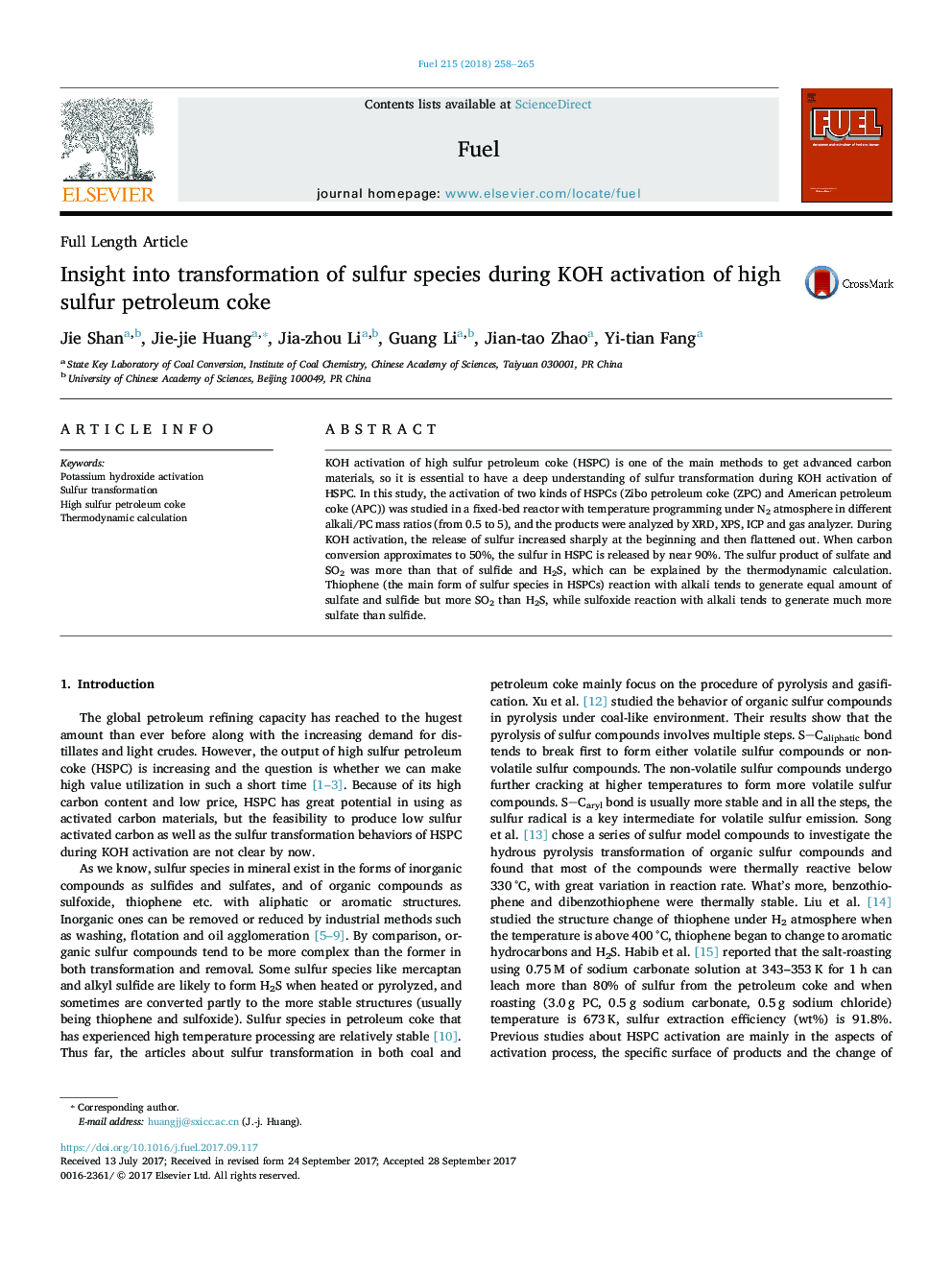| Article ID | Journal | Published Year | Pages | File Type |
|---|---|---|---|---|
| 6632301 | Fuel | 2018 | 8 Pages |
Abstract
KOH activation of high sulfur petroleum coke (HSPC) is one of the main methods to get advanced carbon materials, so it is essential to have a deep understanding of sulfur transformation during KOH activation of HSPC. In this study, the activation of two kinds of HSPCs (Zibo petroleum coke (ZPC) and American petroleum coke (APC)) was studied in a fixed-bed reactor with temperature programming under N2 atmosphere in different alkali/PC mass ratios (from 0.5 to 5), and the products were analyzed by XRD, XPS, ICP and gas analyzer. During KOH activation, the release of sulfur increased sharply at the beginning and then flattened out. When carbon conversion approximates to 50%, the sulfur in HSPC is released by near 90%. The sulfur product of sulfate and SO2 was more than that of sulfide and H2S, which can be explained by the thermodynamic calculation. Thiophene (the main form of sulfur species in HSPCs) reaction with alkali tends to generate equal amount of sulfate and sulfide but more SO2 than H2S, while sulfoxide reaction with alkali tends to generate much more sulfate than sulfide.
Related Topics
Physical Sciences and Engineering
Chemical Engineering
Chemical Engineering (General)
Authors
Jie Shan, Jie-jie Huang, Jia-zhou Li, Guang Li, Jian-tao Zhao, Yi-tian Fang,
